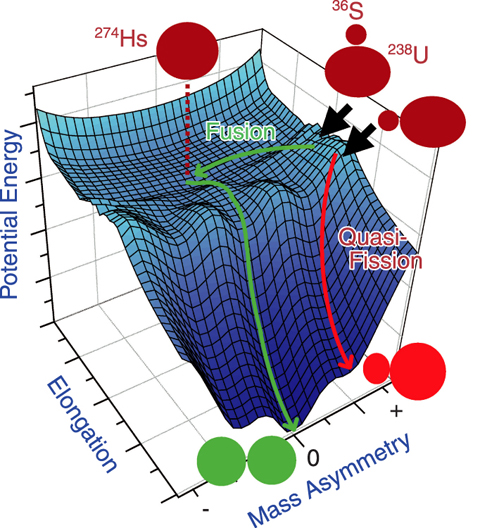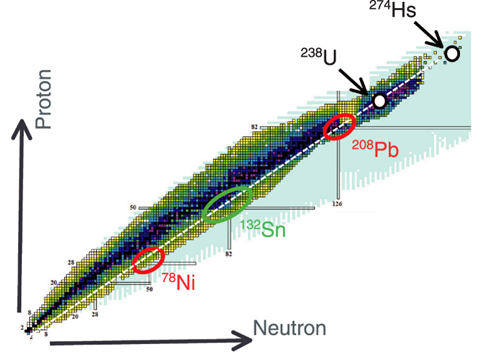
Fig.6-4 Potential energy surface for 274Hs

Fig.6-5 Chart of nuclei plotted according to neutron and proton number

Fig.6-6 Fission fragment mass distributions in the reactions of 36S + 238U
Nuclear fission is a fundamental phenomenon for the use of nuclear power. The fragments of neutron-induced fission of uranium-235 (235U) exhibit mass asymmetry. Even modern theory cannot predict this mass distribution, demonstrating that fission is still an unknown phenomenon.
Fission is considered to proceeds through a valley (channel) in the potential energy surface of the nucleus. In potentials calculated with the classical nuclear model, there are only mass-symmetric channels, which contradicts observations. A microscopic property (shell effects) must be taken into account to explain the mass-asymmetry.
In this work, fission of super-heavy nucleus hassium-274 (274Hs, atomic number 108) was studied in order to investigate the effects of nuclear-shell on fission. In the potential energy map for 274Hs in Fig.6-4, two distinct fission valleys are evident. One is the channel with mass-symmetry, occurring due to the shell around tin-132 (132Sn), as indicated in Fig.6-5. The other is the mass-asymmetric channel of nickel-78 (78Ni) and lead-208 (208Pb), formed by double closed shells which appear only in super-heavy nuclei. To investigate this channel, we measured 274Hs fission fragment mass distributions.
The 274Hs was produced by bombarding sulfuer-36 (36S) on uranium-238 (238U). The experiment was carried out at the JAEA tandem accelerator at the Nuclear Science Research Institute. Two fission fragments produced by the reaction were detected simultaneously to determine the fragment masses. The results are shown in Fig.6-6. The upper figures show the results from higher bombarding energies. At the low energies, the distribution changes to mass asymmetry with peaks at 200/74 u. The results proved the presence of the new fission channel.
The energy dependence of the mass distributions in Fig.6-6 arises from the lemon-like deformation of 238U as seen in Fig.6-4. At the high energies of 36S, reaction occurs from every colliding angle. Symmetrical fission occurs after the compound nucleus is formed by fusion. At the low energies, reaction starts only from polar collisions and the system easily fissions through the asymmetric channel. Quasi-fission, i.e. fission without formation of a compound nucleus, was observed, proving the presence of the new fission channel.